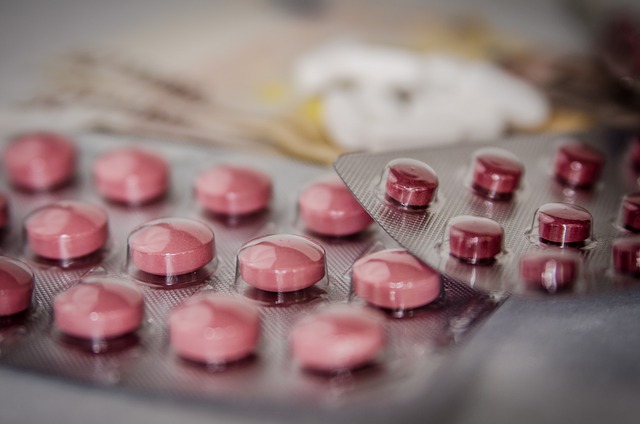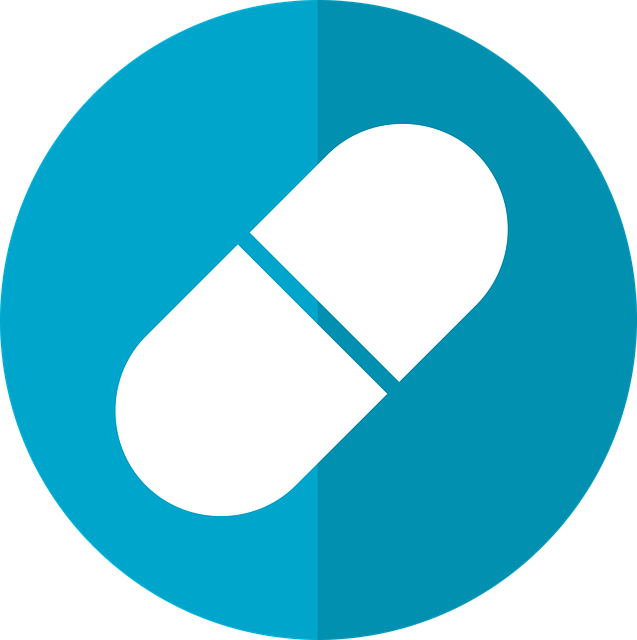GLP-1 drugs, cost-effective and convenient type 2 diabetes medications, offer advanced glycemic control and weight management benefits. Rising costs globally prompt initiatives to make them more accessible through tiered pricing, value-based models, patent expirations driving generic competition, and improved delivery methods. These strategies aim to enhance diabetes care, reduce medication burdens, and ultimately improve public health outcomes worldwide.
The growing prevalence of diabetes globally has led to a corresponding rise in the demand for effective and cost-effective treatments, particularly GLP-1 receptor agonists. This article delves into the cost-effectiveness of GLP-1 drugs, exploring their mechanisms, global pricing dynamics, access challenges, and potential solutions. We analyze successful cost-saving strategies, discuss upcoming innovations, and examine the impact on patient affordability and diabetes management worldwide. Understanding these factors is crucial in optimizing resource allocation for effective GLP-1 drug therapy.
Understanding GLP-1 Receptor Agonists and Their Role in Diabetes Management

GLP-1 receptor agonists, or GLP-1 drugs, are a class of medications designed to mimic the effects of the natural hormone glucagon-like peptide-1 (GLP-1). These drugs play a significant role in diabetes management, particularly type 2 diabetes. By activating GLP-1 receptors in the body, they stimulate insulin production and suppress glucagon secretion, leading to improved blood sugar control. This dual action helps lower blood glucose levels while reducing the risk of hypoglycemia.
GLP-1 drugs have gained attention for their cost-effectiveness compared to other diabetes treatments. They are often administered via injection or in tablet form, offering convenient options for patients. The medications have shown promising results in clinical trials, demonstrating their ability to reduce HbA1c levels and support weight management—an added benefit for many diabetics. With their multiple advantages, GLP-1 receptor agonists represent a valuable addition to diabetes management strategies.
The Rising Cost of Chronic Diabetes Care: A Global Perspective

The escalating costs of chronic diabetes care have become a global concern, with significant implications for both patients and healthcare systems worldwide. This rising trend is particularly evident in the case of GLP-1 receptor agonists, a class of drugs that have gained prominence in diabetes management due to their numerous benefits. These medications offer improved glycemic control, reduced weight, and potential cardiovascular advantages compared to traditional insulin therapy. However, their increasing utilization has led to heightened concerns regarding accessibility and affordability, especially in regions with diverse economic landscapes.
The global perspective reveals a stark contrast in the availability of GLP-1 drugs across different countries. Developed nations often have better access to these innovative treatments due to higher healthcare expenditure. In contrast, developing countries face challenges in integrating GLP-1 receptor agonists into their diabetes care infrastructure due to limited resources and higher drug costs relative to local incomes. This disparity underscores the urgent need for cost-effective strategies to make these potentially life-changing medications more accessible globally, ensuring better diabetes management and improved health outcomes for all.
How GLP-1 Drugs Work: Mechanisms and Benefits for Patients

GLP-1 receptor agonists, or GLP-1 drugs, mimic the effects of a natural hormone produced in the gut called glucagon-like peptide-1 (GLP-1). These drugs work by binding to specific receptors in the brain and intestine, leading to various beneficial effects. One key mechanism is their ability to stimulate insulin secretion in a glucose-dependent manner, helping to lower blood sugar levels after meals. Additionally, GLP-1 drugs suppress appetite and slow gastric emptying, contributing to weight loss and improved glycemic control.
The benefits of these drugs extend beyond blood sugar management. They have been shown to reduce the risk of cardiovascular events, such as heart attack and stroke, in patients with type 2 diabetes. Moreover, their appetite-reducing properties can lead to sustained weight loss, offering a valuable tool in the fight against obesity. GLP-1 drugs represent a significant advancement in diabetes treatment, providing a cost-effective and patient-friendly approach that combines blood sugar control with weight management.
Exploring the Market Dynamics: Pricing Strategies of GLP-1 Medications

The market for GLP-1 receptor agonists, or GLP-1 drugs, is a dynamic landscape shaped by competitive pricing strategies. These medications, which mimic the effects of the natural hormone glucagon-like peptide-1, have revolutionized diabetes management and cardiovascular risk reduction. The global demand for GLP-1 drugs has led to intense market competition, with pharmaceutical companies employing various pricing tactics. One common approach is tiered pricing, where the cost varies based on patient demographics or healthcare system structures.
Additionally, value-based pricing models are gaining traction, focusing on the long-term health outcomes and cost savings associated with GLP-1 drug therapy. This shift towards more flexible pricing strategies aims to make these life-changing medications more accessible to a broader patient population, ultimately improving diabetes care and public health outcomes.
Accessing Affordable Treatments: Public Health Initiatives and Insurance Coverage

Accessing affordable treatments is a critical aspect of improving public health, especially for chronic conditions like type 2 diabetes. In recent years, there has been a growing emphasis on making GLP-1 drugs more accessible to patients worldwide. Public health initiatives play a pivotal role in bridging the gap between drug development and patient care by implementing strategies to enhance affordability and insurance coverage. These efforts often involve negotiations with pharmaceutical companies to reduce prices, as well as collaborations with government bodies and healthcare providers to ensure these life-changing medications are covered under various insurance plans.
Many countries have recognized the potential of GLP-1 receptor agonists in managing diabetes and improving overall health outcomes. As a result, insurance policies are increasingly incorporating these drugs into their coverage frameworks. This shift towards inclusivity allows patients to access necessary treatments without facing financial barriers. By addressing affordability concerns, public health initiatives aim to promote better glycemic control, reduce the risk of diabetic complications, and ultimately enhance the quality of life for individuals living with diabetes.
Patient-Centric Solutions: Generic Alternatives and Patents Expiring

In recent years, the landscape of diabetes management has seen a significant shift towards patient-centric solutions, thanks to advancements in GLP-1 receptor agonists (GLP-1 drugs). One crucial aspect is the emergence of generic alternatives, which have revolutionized access and affordability. As patents on these groundbreaking drugs expire, the market is experiencing a surge in competition. This competitive environment drives down prices, making GLP-1 drugs more accessible to patients worldwide.
The availability of generics offers substantial cost savings for patients, healthcare providers, and insurers. It enables those with diabetes to receive effective treatment without breaking the bank. Moreover, this trend fosters innovation as pharmaceutical companies focus on developing even more affordable and accessible GLP-1-based therapies, further enhancing patient outcomes and overall healthcare efficiency.
Case Studies: Successful Cost-saving Strategies in Clinical Practice

In clinical practice, case studies illustrate successful cost-saving strategies employing GLP-1 receptor agonists (GLP-1 drugs). These insulinotropic agents have demonstrated significant potential in diabetes management by lowering blood glucose levels and reducing the need for intensive insulin therapy. For instance, a prospective study involving type 2 diabetics showed that transitioning to GLP-1 drug treatment resulted in decreased medication costs while improving glycemic control. The patients on GLP-1 drugs required less frequent injections of other, often more expensive, insulin therapies.
Additionally, GLP-1 drugs offer benefits beyond cost savings. They are known for their once-daily administration, enhancing patient adherence and convenience. This simplifies treatment regimens, reduces the burden of self-management, and improves quality of life for patients. Such advantages not only contribute to better healthcare outcomes but also indirectly lower healthcare costs associated with complex diabetes management.
Future Outlook: Innovations and Their Impact on Glp-1 Drug Affordability

The future of GLP-1 receptor agonists looks promising, with ongoing research and development pushing the boundaries of this class of diabetes medications. Innovations in delivery methods, such as improved injection technologies and even oral formulations, could significantly enhance patient convenience and adherence to treatment regimens. Additionally, advancements in molecular design may lead to more potent and selective GLP-1 drugs with reduced side effects, making them an even more cost-effective option for managing diabetes.
These developments have the potential to make GLP-1 drugs more accessible and affordable on a global scale. As research progresses, it’s likely we’ll see more options available to patients, leading to better glycemic control and improved quality of life. Moreover, with increased competition in the market, drug manufacturers may be driven to offer more economical treatments, further promoting accessibility for those who need them most.
